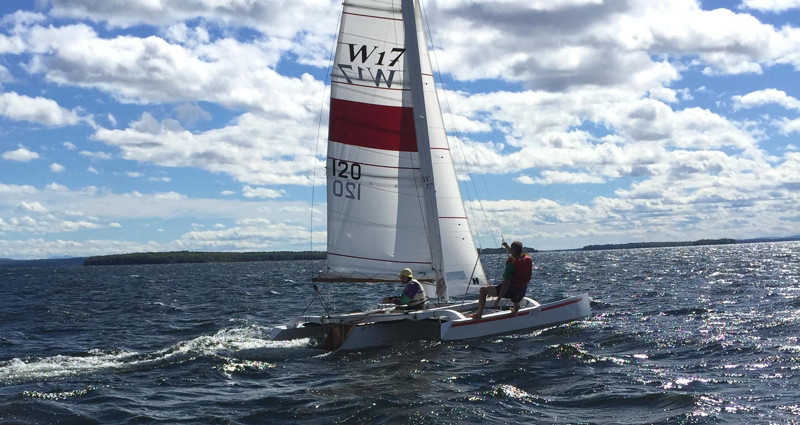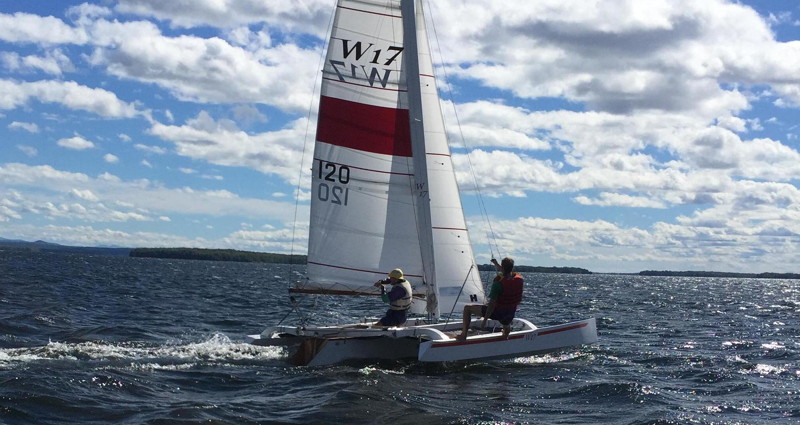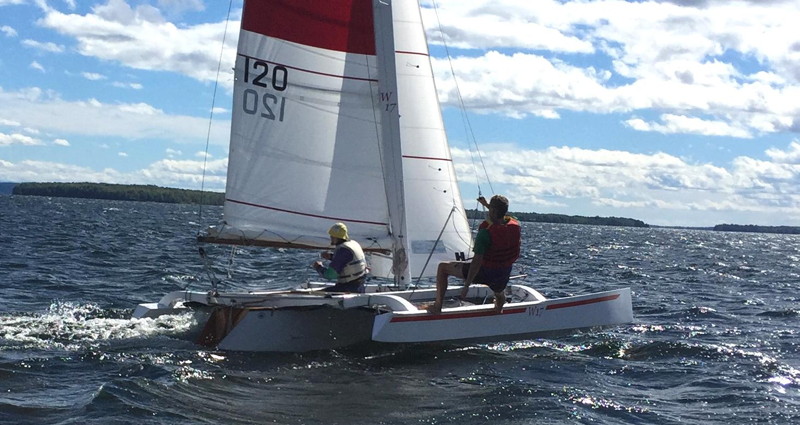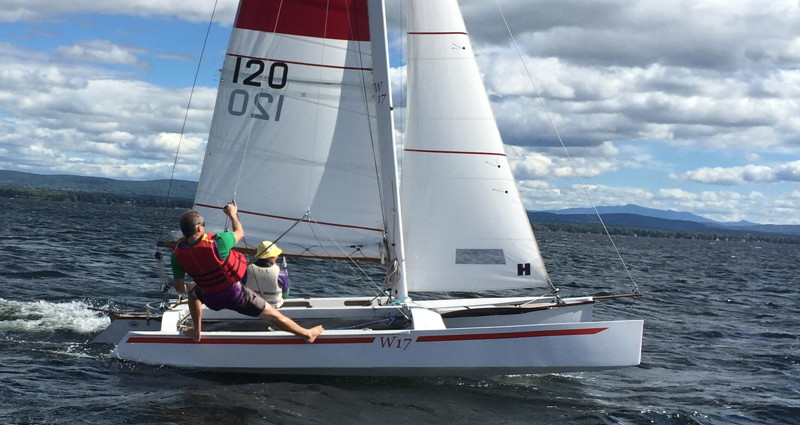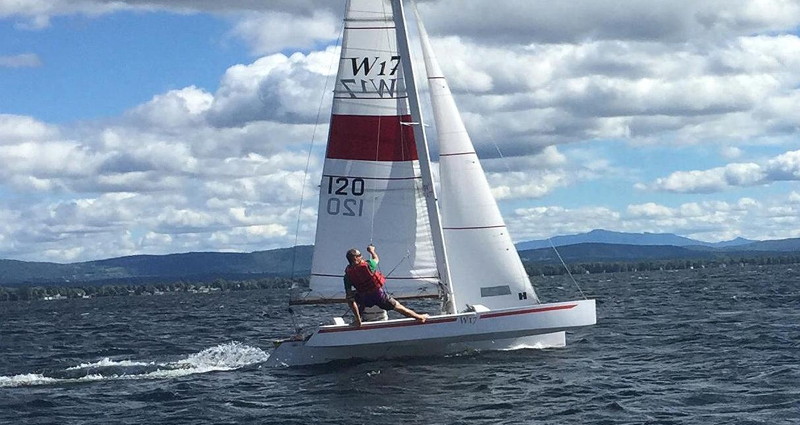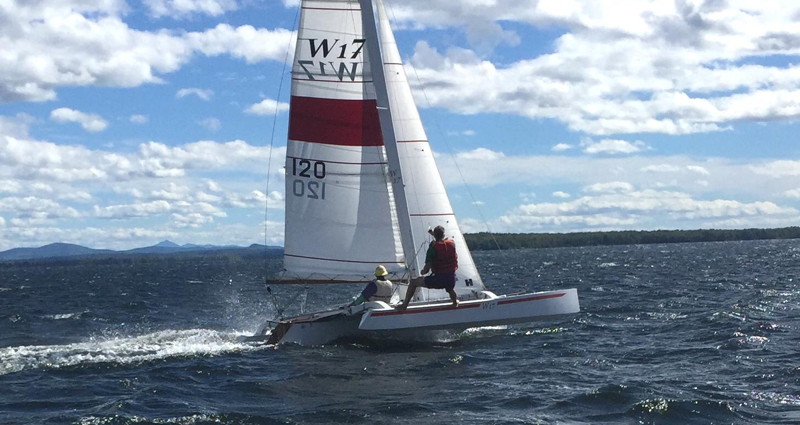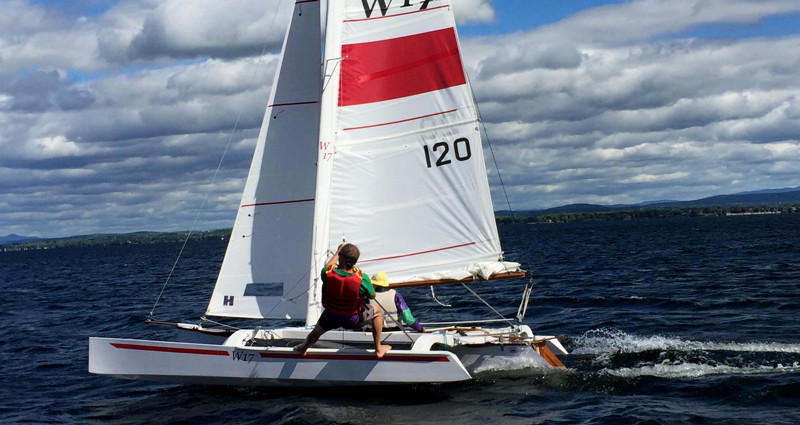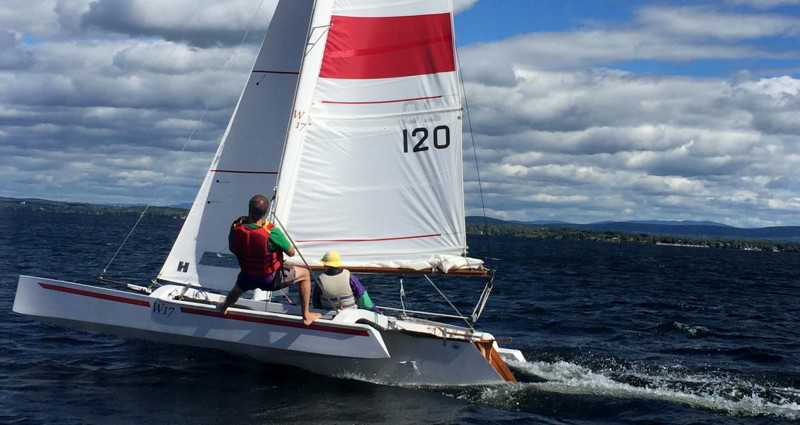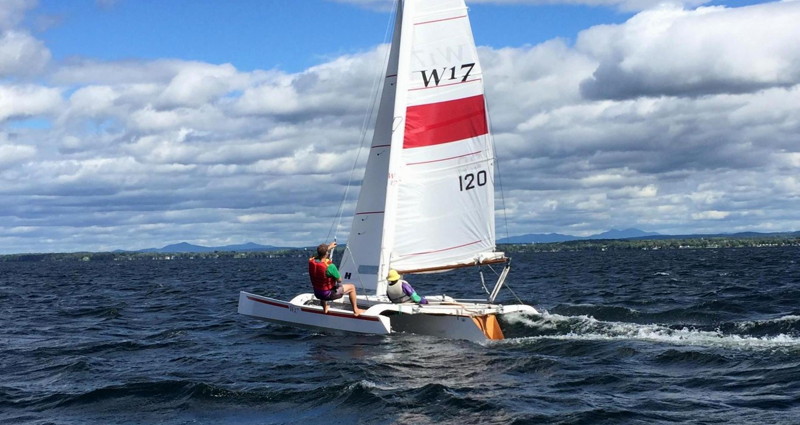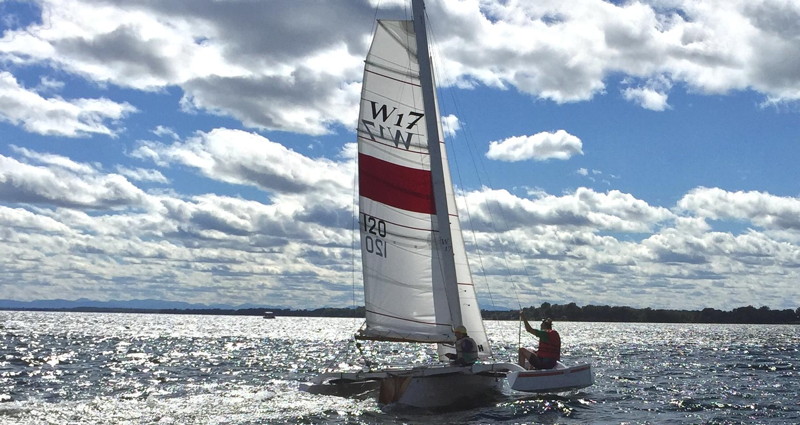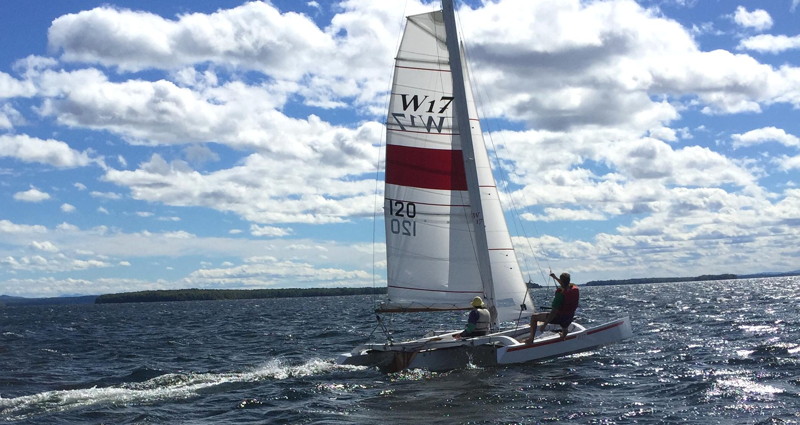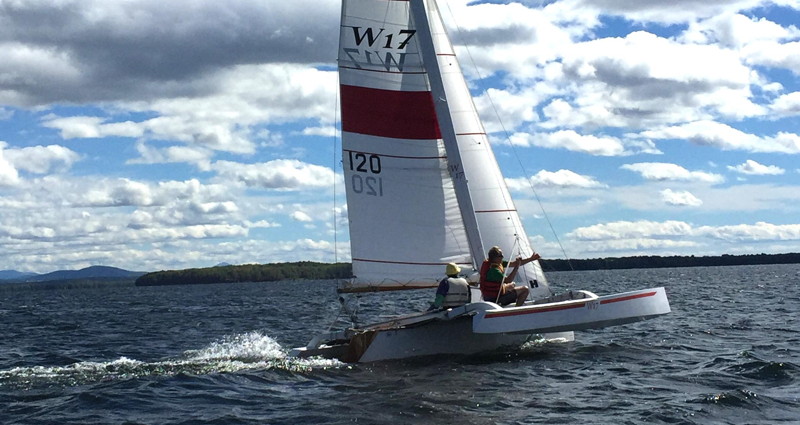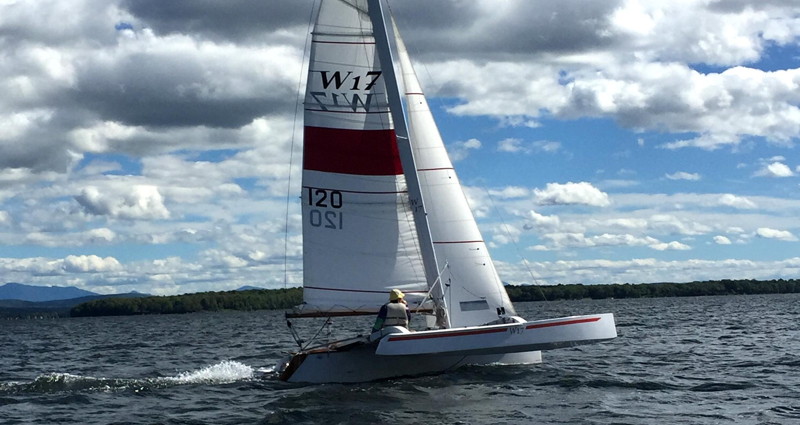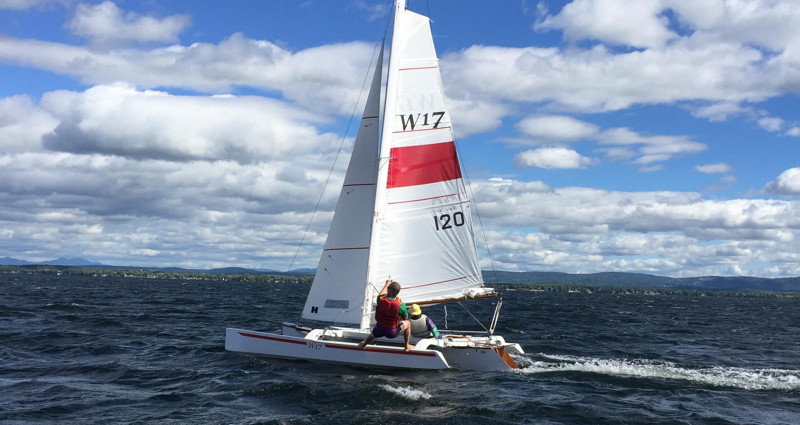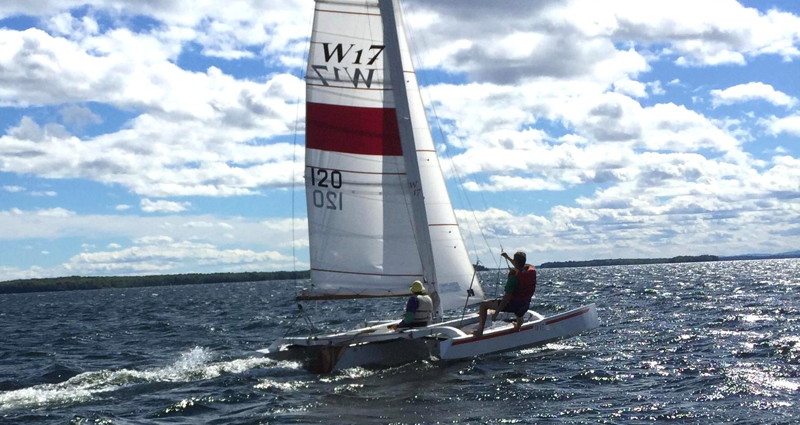



More pics of the W17R
Place CURSOR over Image to PAUSE Auto Slide Show. In September, we choose a good breeze to check out a trapeze rig on the boat. It's really not necessary but it's a fun option for a young, active crew. As it was gusty, we also took in a reef, so we were often somewhat under canvassed. But all proved easy to control and gave a fun ride. It's important with all small boats, but particularly with a multihull, to have the mainsheet cleat set up correctly, as we tend to sail with the mainsheet cleated much of the time rather than hang on to what is often, a highly loaded mainsheet. As the cleat should be easy to disengage, the mount for the camcleat should be set very high, so that a straight tug will easily pull the sheet out. This will mean that you may need to stand and LIFT it high to engage. But it's FAR safer to be hard to engage, than hard to release .... perhaps the difference between capsizing or not!
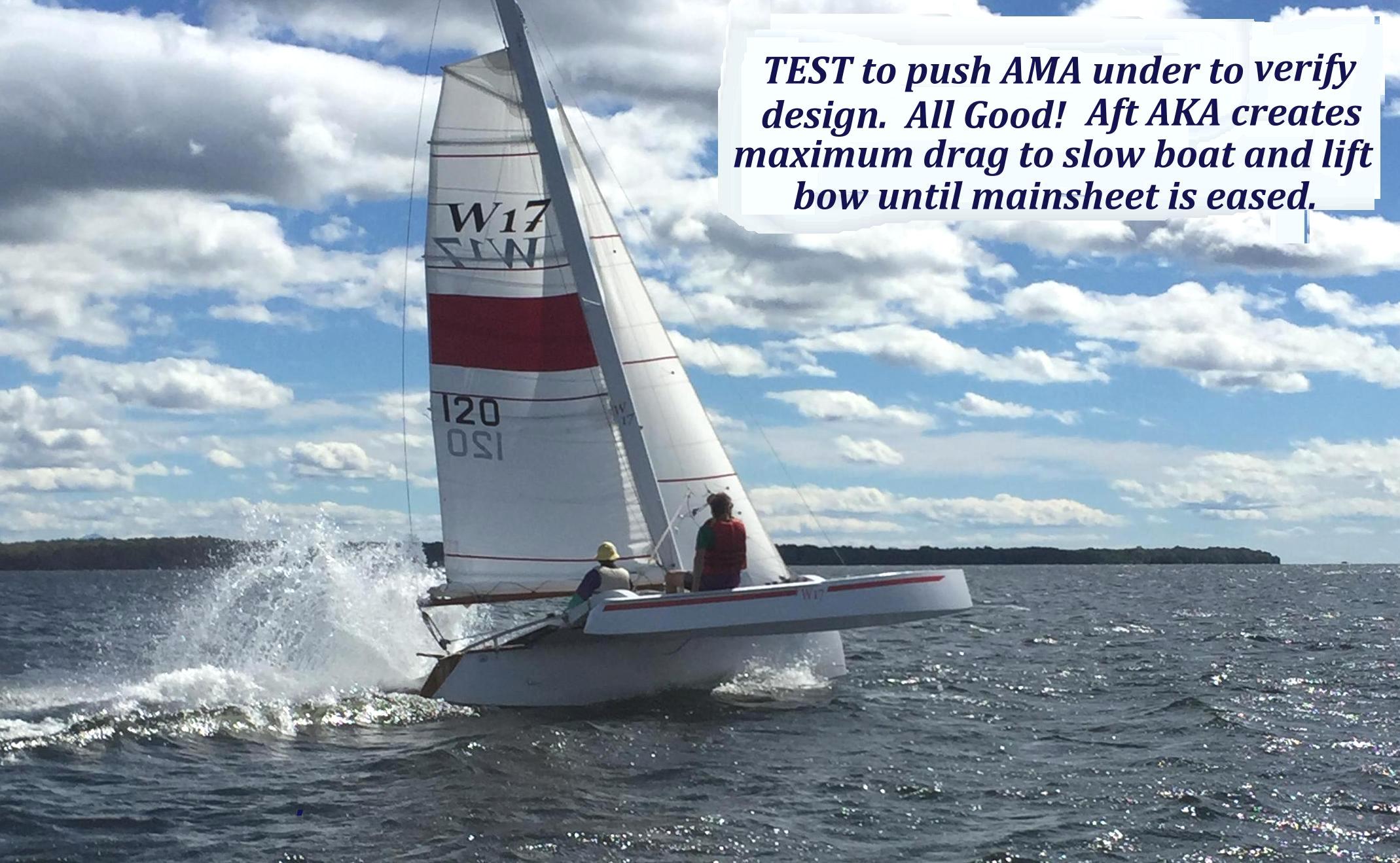
If you permit a gust to bury any ama, this is typically when the beam structure is loaded the most. (The ama panelling will become increasingly loaded if pushed deeper underwater, by the hydrostatic pressure based on depth). In this photo, by keeping the mainsheet cleated and also coming in from the trapeze, we've intentionally allowed the ama to bury, This photo shows exactly what should happen. We want to slow the boat, but not bury the bows. The fact that the W17 ama has reserve forward buoyancy and that the forward beam has a good fairing, allows the water flow over the deck to pass mostly to the rear beam, that intentionally, does not have fairing. The water then applies a significant force on the aft beam only and as that slows the boat, it also tends to lift the bow ... all good things. The force on that aft beam is indicated by the height of the spray shooting up and is a good visual reminder that the mainsheet needs to be immediately eased. If correctly adjusted, as explained above, a quick jab on the sheet allows it to run out and immediately the boat levels up. Normally, one should never see this much heel on a W17.- it was just a test to demo this safety feature. Be warned though, running hard into large waves can momentarily change the applied forces, so ALWAYS be immediately ready to release the mainsail when sailing in gusty and high wave situations, especially when sailing fast
"See the Copyright Information & Legal Disclaimer page for copyright info and use of ANY part of this text or article"
